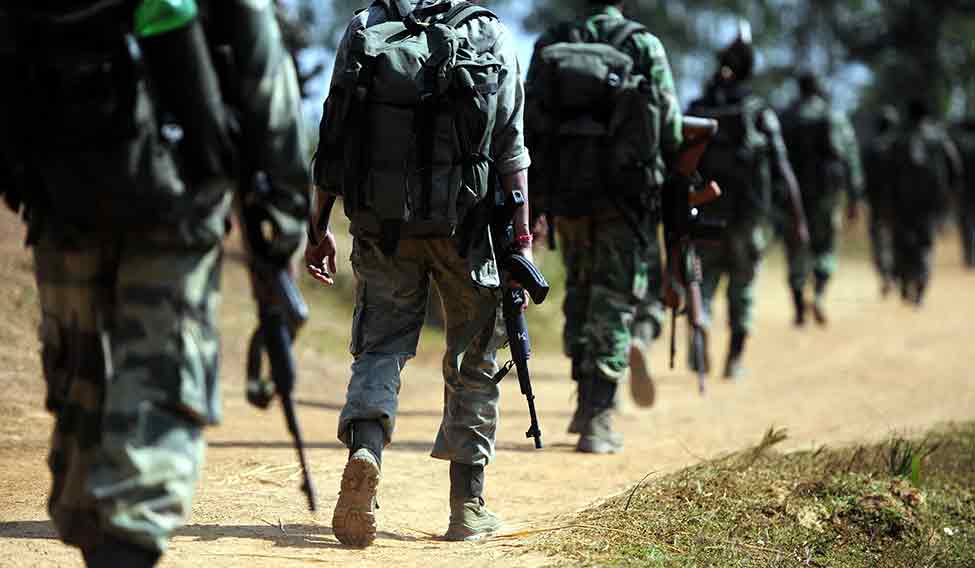About four decades after the Naxals created the first free zone in India in Naxalbari, the Communist Party of India (Maoists) did it again in Chhattisgarh. The Maoists created another free zone in West Bengal in 2009 in the Junglemahal area of West Midnapore, Bankura and Purulia districts. It lasted only two years, and was crushed by a combined operation by state and Central forces.
If the uprising in Naxalbari was due to oppression of farmers, it was poverty and hunger that made people take up arms in Junglemahal. The Maoists killed more than 200 leaders of the ruling CPI(M), and the walls of Junglemahal were full of posters hailing Charu Majumdar as their source of inspiration. But they also admired the Liberation Tigers of Tamil Eelam and the Pakistani terrorist group Lashkar-e-Taiba. “We found incriminating documents that suggested that Maoists had links with the LTTE and they were sympathetic towards Pak-based terror groups,” said an inspector general of West Bengal. Intelligence reports have mentioned that some members of the People’s War Group had received training in LTTE camps in Tamil Nadu. There is also evidence that the Maoists received training from terror groups in the northeast, especially Manipur, and arms from Myanmar-based terror outfits. In return, Maoists supported the ‘independence’ of Manipur.
A 2013 report by the National Investigation Agency said the tie-up started ten years ago. “People’s Liberation Army (PLA), a proscribed terrorist group in Manipur, had imparted training to some of the left-wing extremists groups in the country including CPI (Maoists) for waging war against the state,” said the report.
The PLA is the guerrilla wing of many small insurgent groups in Manipur. It was in 2006 that the standing committee of the PLA (equivalent of politburo) asked its external affairs department to talk to the Maoists for the first time. “On June 16, 2006, chief external affairs department officers of PLA met with politburo and central committee members of the CPI (Maoists) and discussed future course of action,” said the report. “A plan was finalised and the PLA agreed to supply communication equipment, arms and ammunition and training to Maoists cadres.” The PLA opened a liaison office in Kolkata and posted Arnold Singh as chief liaison officer there.
The report said the PLA agreed to give Maoists sophisticated weapons from China in return for ammonium nitrate, which the Maoists possessed in huge amounts thanks to their domination in the mining belt. Ammonium nitrate is used in improvised explosive devices.
The Maoists made two payments—Rs 50 lakh and Rs 13 lakh—to the PLA in 2009 for arms and ammunition. Around this time Mallojula Koteswara Rao, better known as Kishenji, took charge of the Maoists in West Bengal. Though he was not very keen, the relationship between the organisations became deeper. A big PLA team led by senior commander S.S. Angikamang came from Myanmar and stayed in Kolkata for a few days. A senior military commission member of the Maoists took them to Dandakaranya in Chhattisgarh for training. “The PLA team later went to Jharkhand also. But some of the PLA commanders fell sick, so they had to return,” said the report.
Later in the year, the Maoists sought more weapons and paid Rs 30 lakh. “Military commission members Alok and Raj wanted TH-K2AT sets and RPG (rocket launcher) so that Maoists could attack more security installations in India,” said the report.
Things slowed down in 2010, as the Maoists decided to postpone the training of its cadres by the PLA because of Operation Green Hunt. “However, the weapon buying continued,” said the report.
Around this time, the Maoists’ eastern region bureau secretary Prashanta Bose met a few PLA commanders in Jharkhand. “Bose said PLA should send two instructors for military training and two instructors for communication training henceforth for 12 to 14 months,” said the report. He sought more arms and ammunition and wrote to PLA president Irengbam Chaoren. Maoists’ general secretary Mupalla Laxmana Rao, alias Ganapathy, also wrote to Chaoren about the need for unity to counter Green Hunt. Chaoren then suggested a ‘strategic united front’. The report said Chaoren congratulated Ganapathy when 76 CRPF jawans were killed “with the help of PLA” in Dandakaranya.
In 2010, the PLA sent five commanders to India. A rigorous training session in jungle warfare, weapon handling, firing and war tactics started in September.They went back to Myanmar in December.
In 2011, Dilip Singh, a senior commander of the PLA, was arrested in Delhi while visiting his colleagues hiding in Old Delhi. After this, a Maoists’ military commission member, Sagar, went to Silchar and met PLA members, including senior commander Dhiren Singh, and handed over a letter on the future course of action. But the letter leaked and Dhiren Singh was arrested by the special task force of the West Bengal Police. The NIA then conducted massive raids in the northeast. About 400 cases were filed and around 295 PLA and Maoists cadres arrested. Among them was Arnold Singh, the liaison officer.
“Though the PLA and Maoists nexus has been exposed, the link is still there. In fact, more than the PLA, the Maoists have spread their connection with other organisations in Manipur and Nagaland,” said S.S. Singh, a former officer in the Manipur Police.
As chairman of Maoists’ military commission, Kishenji had opposed the collaboration with the northeast terror outfits. “Kishenji did not approve of the idea of Maoists being part of international terror rackets. He was a hardcore PWG member and a nationalist among the Maoists,” said an intelligence officer.
There has always been a rift between the PWG and MCC factions in the party. Though both followed the principles of Charu Majumdar, the PWG, wanted an Indian revolution without the help of international terror outfits. “But MCC felt that Maoists’ revolution would not succeed unless they became part of the larger terror network,” said an intelligence officer in the West Bengal Police. “Party chief Ganapathy approved that.”







